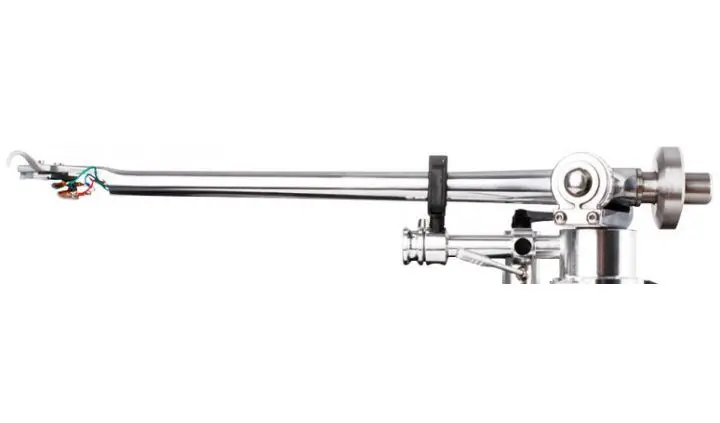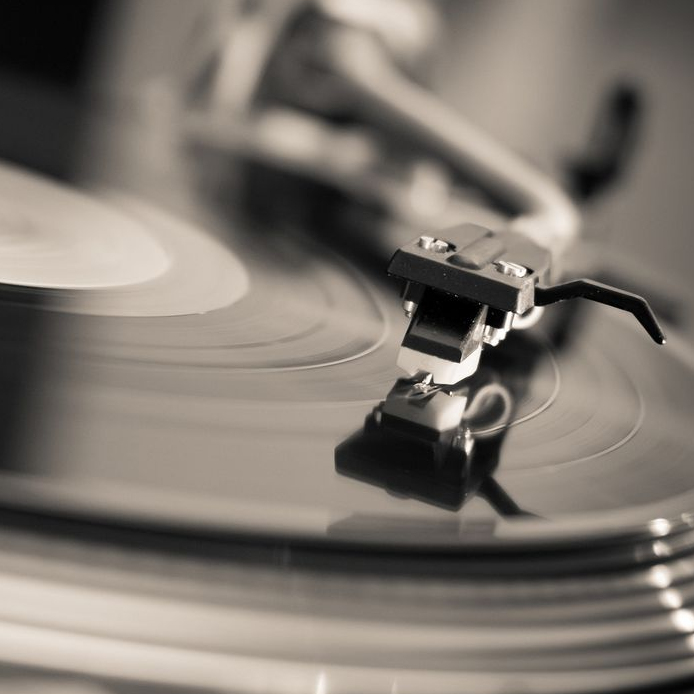Some advice for turntable based systems
It came about principally because turntables were considered the primary source and it was driven by the development of certain turntables which turned thinking on its head.
A turntable is actually a combination of things. It is the unit itself, which supports the motor, the record and mounts the tonearm. It is the power supply which enables the motor to turn. It is the tonearm, which supports the cartridge and carries information to the amplifier. It is the cartridge which measures microscopic vibrations cut into vinyl.
So we can see there are really 4 components;
Motor Unit
Power Supply
Tonearm
Cartridge.
These make up a record player; even one that comes complete with all these items built in or fitted. Most people will buy a turntable as a complete package and this will either be built this way OR be assembled by the retailer to suit the customers budget and requirements.
To all intents and purposes we’re discussing better quality turntables here. Think of the Sondek, or the Roksan, the Avid or the SME. Of course there are many others too but this will cover all of those too, either directly or indirectly.
Motor Unit
In terms of the turntable this is actually the most important component in the record player. It is demonstrable and fundamental and underscores the development of most turntable ranges. Put simply; a better motor unit with a cheaper arm and cartridge will normally outperform a cheaper motor unit with a high end arm and cartridge.
The motor unit has a rotating platter that supports the record. It also supports the motor unit and the tonearm (which in turn supports the cartridge). It has to provide a perfect environment for all the components to work in harmony and without interference. Rega refers to the turntable as a vibration measuring device. But measuring vibration is tricky in an environment full of noise and vibration.
The air is full of vibration from music playback. The surface the turntable sits on can transmit vibration. Mains fluctuates and can cause the motor to generate noise. So all of these factors can prevent the right vibration being measured accurately.
The motor unit can deal with this in a number of ways. A popular one is to decouple the record playing part from the noise/vibration. This is normally done by some form of suspension or compliance. Another approach is to make the turntable very low mass and extremely rigid. Both designs have their merits. Both work and it isn’t my job to say that one is superior to the other. With correct design and development both can lift a lot of music from the groove and deliver it to the amplifier.
In most cases power supply to the motor is of critical importance. If the motor turns at the correct speed (many don’t) and without putting noise or vibration into the playback surface then the design is good. Some turntables come in basic form but can be improved dramatically by improvement to the power supply.
Often we are asked about belt drive and direct drive. Again there is no definitive answer at the top end of the market. However it is worth noticing that for domestic listening probably 85% of record players use a drive belt. The reason for this is simple; a belt will act as a filter. It will reduce the transmission of vibration between the motor and the platter which supports the record. Less vibration will mean less loss of information.
So your turntable spins at the correct speed. It has a power supply that enables 33/3 to be delivered smoothly and consistently to the platter. It uses engineering to make sure the platter is free from all types of vibration and it provides a platform for the tonearm and the cartridge to read this information accurately with a backdrop of a massive amount of harmful air and surface-borne vibration. This in simplest form is the goal of all turntable design and it is an extremely complex one.
This in short is why turntables are so expensive. All of that sounds simple but it is far from being simple and requires a lot of R&D, a lot of engineering and a lot of know-how to achieve. Improvements in any area will provide noticeable improvements in sound. Basically the recovery (or loss of less) information from the groove.
Tonearm

Once we have a perfect rotation and a perfect bed for the vinyl we need a tonearm. It carries the cartridge and ensures that the data recovered from the groove isn’t lost or coloured. It is worth bearing in mind that music on vinyl is reproduced from microns of vibration buried in a groove wall. If there is ANY unwanted movement in the tonearm then music will be lost. Or changed. Simple.
The arm needs a good connection to the turntable at a fixed distance and with the correct geometry for the tonearms length. It needs good bearings with as close as possible to zero play in them. Ideally it should be a one-piece design as every break or connection weakens rigidity and signal integrity. It needs to be non resonant. It needs to be adjustable so as to suit the cartridge (of which many designs could be chosen). It needs high quality wiring to preserve the delicate signal. The signal from an MC cartridge is the lowest one in an audio system and it requires a high amount of additional amplification. It is extremely delicate; making upstream problems even more tricky.
SME and Rega elected to design a one-piece tonearm for this reason. Other companies use aviation grade adhesives, claiming the join to be stronger than the actual material. All of these things cost, as do high tolerance bearings. These factors plus R&D mean an extremely good tonearm can cost a lot of money.
Cartridge
Put in brutally simple terms, turntables work by dragging a tiny diamond through the grooves of a record. The cartridge's job is to convert the resulting vibrational energy into a signal which can be passed to the amplifier. There is a large amount of musical information encoded in records - so it should be no surprise that the quality of your cartridge has a big impact on quality. But of course this is relative to the rest of the turntable. High end cartridges have no place in low end turntables.
The diamond stylus tip is the only part of the cartridge that makes direct contact with the record. As the stylus traces the movements of the grooves, it vibrates the cantilever. The cantilever is a rigid tube with a stylus mounted on one end and a magnet on the other. The rubber suspension allows the cantilever to pivot so that the stylus can accurately track the grooves.
Vibrations from the stylus tip travel along the cantilever to the magnet. As the magnet vibrates, its magnetic field varies. These variations in the magnetic field generate a small voltage in the coils, which corresponds to the movement of the magnet. This signal is then passed through a phono preamp or phono stage (for RIAA equalisation) before reaching the amp/speakers, which convert the electrical signal into sound.
(SIDE NOTE: To get a stereo signal (left and right channels), this configuration is essentially doubled. Two magnets are attached to the cantilever at a 90 degree angle each with a corresponding set of coils.
Generator type: The two main generator types are moving magnet (MM) and moving coil (MC). MM cartridges are most common. MC cartridges tend to be lower output and require a preamp with a special MC setting. MC cartridges are generally more expensive.
Stylus shape: The shape of the stylus affects how it makes contact with the record groove. The narrower the contact radius, the better the stylus will be able to track modulations in the groove. The two most common shapes of styli are conical and elliptical. Elliptical shaped styli have a smaller contact radius than conical styli - this allows elliptical styli to trace grooves more accurately and extract more musical information (especially high frequencies). There are others of course (microline and shibata).
Cantilever: In order to effectively transfer vibrational energy from the stylus tip to the magnet (or other generating element), it is critical that the cantilever be as stiff and light as possible. The material, size, and construction of the cantilever affect how well a cartridge can reproduce a range of audio frequencies. The most common material used in cantilevers is aluminium alloy, although carbon, boron, and certain copper alloys are often used.
Trackability: This spec describes how well the stylus can track a modulated record groove. Trackability is measured by recording the maximum amplitude that a stylus can trace before the signal is distorted. Trackability is influenced by many factors - including stylus shape, cartridge alignment, and tonearm compatibility. The spec is often listed in micrometres (μm) - the higher the trackability spec, the better.
Cartridges can make a significant difference and can be extremely expensive. Some are hand made and use extremely high quality components. Because of the size of these devices it is almost akin to high end watches in terms of the engineering on offer.
Good matching with turntable and arm are vital and it is wise to take advice before you spend money. In the case of high end cartridges I’d say it is imperative to do a lot of research and if possible do some listening in the turntable you own.
Some manufacturers take the variability of the situation away by making their own combinations. These might not always present the very best solution but they will have synergy and compatibility and almost always work well.
Setting up the turntable
Very often set-up is vital. However skilled you are there might be specialist jigs and tools required. These can be vital and expensive. Even if you have the tools and are good with your hands there can be pitfalls in the designs of some products that really do mean you’re better in the hands of a good retailer to assist you get the best out of the product.
As a retailer we do suggest using a retailer to help with this. We don’t charge to set up the turntables we supply and we’ll service other turntables fairly cheaply. Most cost about £15 although some require a lot more time so the cost is more.
As a rule of thumb you want to be spending the largest proportion of your budget on the record player, then the next on the tonearm and finally and last on the cartridge. It is similar if you’re upgrading. This rule is a good one and whilst nothing is set in stone we tend to find it gives the best and most predictable results.
In this way you will also find that the internet “sensation” of tricking up cheap turntables with home-spun (and often half-baked) bolt ons can make the product sound very different to how the manufacturer intended. A Fiesta with go-faster stripes and a gurgling exhaust will never be a Porsche, no matter how much you spend on it. I’ll leave it to you to be the judge of if that is good or bad but it stands to reason that if you’ve bought a turntable because you like it - you might want to consider carefully doing anything that takes away the sound you bought it for.
Hope this info is useful. I’m not presenting this as the last word; merely offering the advice that our experience has proven to be good.
Thanks for reading.
